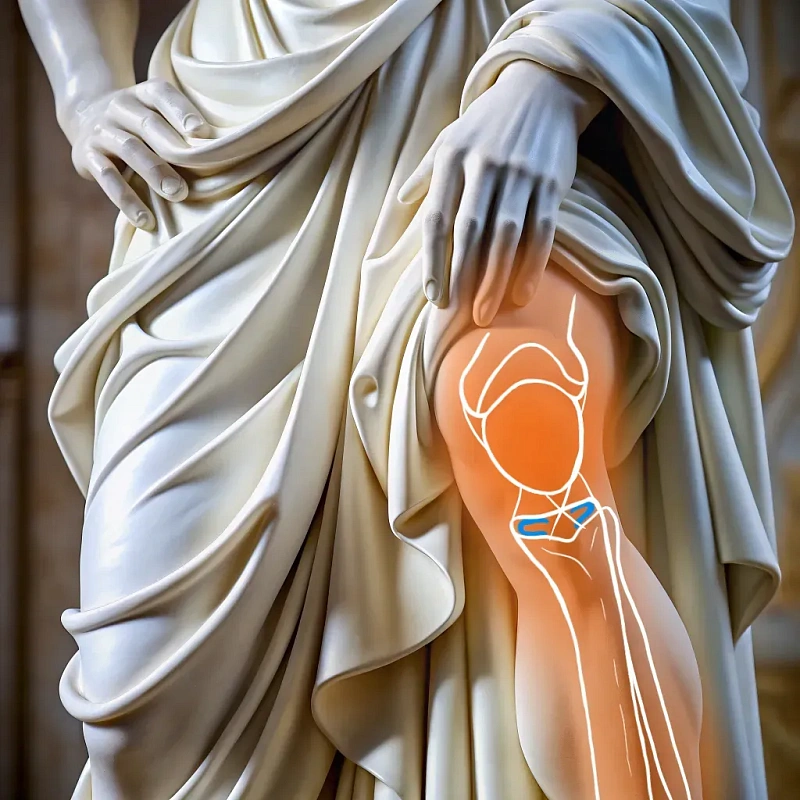Bone deformity treatment
Bone deformity is a change in the shape or position of bones that can occur due to injury, diseases such as arthritis, rickets or osteoporosis, or congenital abnormalities. Deformities can cause pain, impaired mobility and limit daily activities.

Bone deformities can be congenital or acquired as a result of injury, disease, or abnormal development. Deformities are often caused by diseases such as rickets, osteoporosis, dysplasia, or genetic abnormalities.
The primary goal of treatment is to restore normal bone structure and function, improve the patient's quality of life, and prevent deformity related complications. Bone deformities require a thorough approach, including diagnosis, therapy and rehabilitation. The best results can be achieved through an individualised approach and specialist supervision.
Common blood and urine tests Coagulogram (blood clotting assessment) ECG (electrocardiogram) to assess heart condition X-ray of the injured area Computed tomography (CT) or magnetic resonance imaging (MRI)
Mild or moderate deformities are often treated conservatively, with physiotherapy treatments aimed at improving range of motion and strengthening the muscles around the affected area. Orthopedic devices such as braces or orthoses are used to correct and support deformed bones. More complex cases may require surgical intervention, especially when the deformity severely affects the functionality of the limb or causes significant pain. This involves osteotomy, where bone fragments are cut and repositioned to restore the proper structure and function of the bone. Arthroplasty may be required if there is significant joint damage. Alternatively, steel plates, pins or screws may be used to correct the deformity to provide stability and support during the healing process.
Orthopedic fixators: plates, pins and screws to stabilize bones after correction Imaging equipment: X-ray machines and CT scanners.
After treatment, the rehabilitation stage begins, aimed at restoring functions and strengthening the muscles around the corrected bone. Rehabilitation may include physical therapy exercises, physical therapy and, if necessary, the use of orthopedic devices. The duration and intensity of rehabilitation measures depend on the complexity of the deformity and the general state of health of the patient.
Benefits
Restoration of anatomy
Correction of deformity to return the bone to its natural shape and function.
Reducing pain and restoring mobility
The treatment will allow the patient to return to normal life and the usual range of movements.
Preventing complications
Timely treatment prevents further deformation.
Frequently Asked Questions
Is it possible to completely get rid of the deformation?
What measures exist to prevent bone deformity?
Didn't find an answer to your question?
You can describe your problem in detail and ask a question to the doctor. He will answer you and help you find a solution
Врачи
Смотреть всех врачейCandidate of Medical Sciences. Orthopedic Trauma Surgeon. Head of the Traumatology Department.
Orthopedic Trauma Surgeon
Similar referral activities
Arthroscopy of the ankle joint
Ankle arthroscopy is a minimally invasive surgical procedure used to diagnose and treat various diseases and injuries of the ankle joint.
Arthroscopy of the knee joint
Knee arthroscopy is a minimally invasive surgical procedure for the diagnosis and treatment of injuries and diseases of the knee joint. It allows examining the joint for damage and eliminating the identified defects.
Arthroscopy of the elbow joint
Arthroscopy of the elbow joint is a minimally invasive surgical intervention that allows for accurate diagnosis and simultaneous treatment of joint injuries.
Arthrodesis of the joints of the fingers of the hand
The destruction of the joints of the fingers of the hand is accompanied by pronounced pain and impaired functions. Arthrodesis is a surgical intervention in which the affected joint is completely immobilized, which relieves pain and progression of inflammation.
Arthroscopic revision of the cystic joint
The condition of the wrist joints determines the functioning of the hand. Arthroscopic revision is a minimally invasive diagnostic procedure that assesses the condition of the joint tissues, which is necessary for planning subsequent treatment.
Arthroscopy of the shoulder joint
Arthroscopy of the shoulder joint is a minimally invasive surgical procedure designed to diagnose and treat various diseases and injuries of the shoulder joint.

